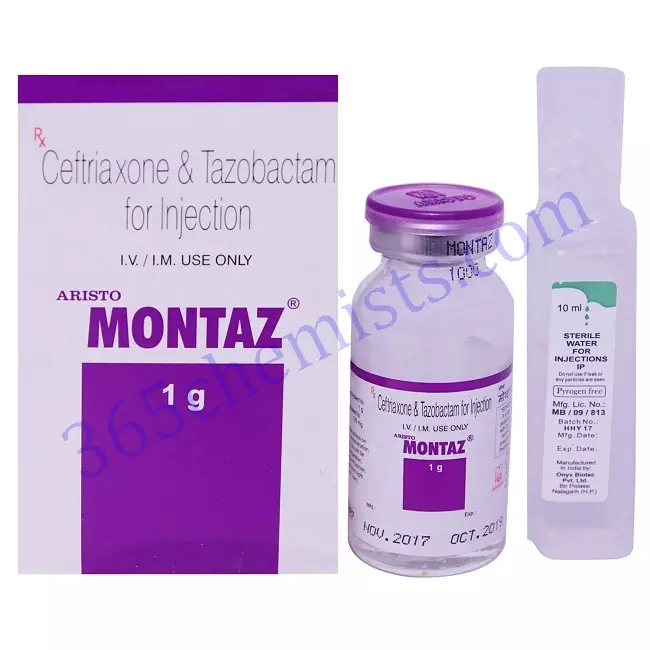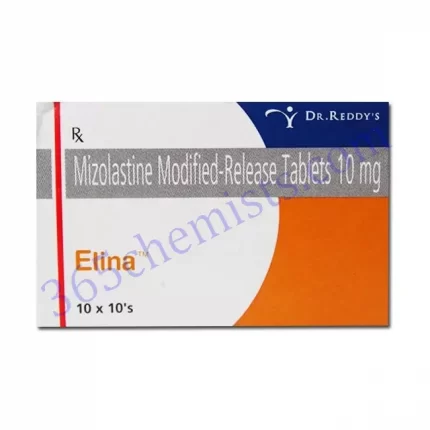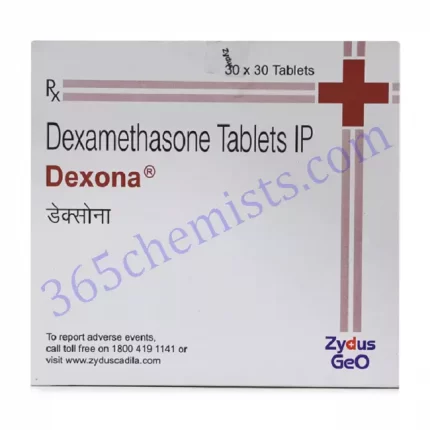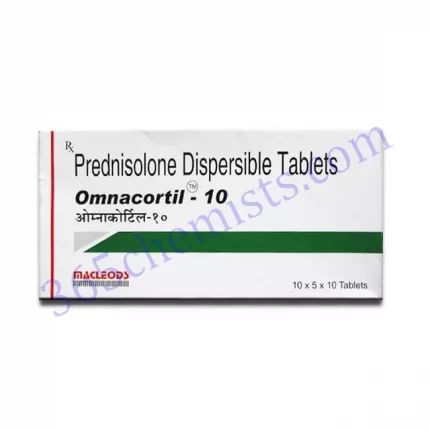Introduction
Ceftriaxone 1000mg and Tazobactam 125mg come together in the powerful medication known as Montaz 1g Injection. This potent combination of cephalosporin antibiotics is used to treat a wide variety of bacterial infections, and it is a member of the class of antibiotics known as cephalosporins. This detailed explanation will provide helpful information about Montaz 1g Injection, including its applications, recommended dosage, potential adverse effects, and safety considerations, among other things.
Montaz 1g Injection is an effective treatment option for a wide variety of bacterial infections because it combines the synergistic effects of the antibiotics ceftriaxone and tazobactam. Ceftriaxone is a third-generation cephalosporin, and tazobactam is a beta-lactamase inhibitor that makes Ceftriaxone more effective against bacteria that are resistant to it. Because of this combination, the Montaz 1g Injection is extremely useful in the treatment of severe infections brought on by bacteria that are susceptible to the drug.
Uses
Montaz 1g Injection is administered to patients suffering from a wide range of bacterial infections, including the following:
- Intra-abdominal Infections: It is an effective treatment for intra-abdominal infections that are complicated, such as peritonitis.
- Infections of the Lower Respiratory Tract Montaz is prescribed for the treatment of hospital-acquired pneumonia as well as community-acquired pneumonia.
- Infections of the Urinary Tract: It is recommended for patients who have urinary tract infections that are particularly severe, such as pyelonephritis.
- Infections of the Skin and Soft Tissues: The Montaz 1g Injection is utilised in the treatment of infections of the skin, including cellulitis and abscesses.
- In patients who have been diagnosed with bacterial meningitis, the administration of Montaz is an essential component of the treatment plan.
Dosage
The dosage of Montaz 1g Injection is based on the severity of the infection, as well as the age, weight, and general health of the patient. It is given to the patient via intravenous administration while they are monitored by a qualified medical professional. It is possible to adjust the dosage depending on how the patient responds to treatment as well as the results of any laboratory tests. It is essential to finish the entire course of treatment exactly as directed in order to ensure that the infection is effectively eradicated.
Precautions
Before the healthcare provider administers the Montaz 1g Injection, they should be made aware of any allergies, medical conditions, or medications that are already being taken by the patient. Patients who have previously experienced severe allergic reactions to cephalosporins or beta-lactamase inhibitors should proceed with caution when taking these medications. In addition, patients who have a history of problems with their liver or kidneys should be carefully monitored while they are receiving treatment.
Side Effects
Montaz 1g Injection is generally well tolerated; however, similar to other medications, it has the potential to cause adverse effects in some people. Diarrhoea, nausea, headaches, and reactions at the injection site are some of the most common adverse effects. Severe allergic reactions do not happen often, but when they do, they can cause problems breathing, swelling of the face, lips, tongue, or throat, and rashes on the skin. In the event that any unfavourable reactions take place, immediate medical attention needs to be sought.
Drug Interactions
Montaz 1g It is possible for certain medications or substances to interact with injection, which could reduce the effectiveness of the injection or raise the risk of adverse effects. It is important to let the healthcare provider know about any medications, vitamins, or herbal supplements that you are currently taking in order to prevent any adverse reactions from occurring.
Pregnancy and Lactation
Before using Montaz 1g Injection, pregnant and breastfeeding women should discuss the medication with their primary care physician. If the potential benefits of the medication outweigh the potential risks, then the medication may be prescribed.
Storage
Montaz 1g Injections should be kept in a dark, cool, and dry location that is out of the direct sunlight. It is critical to store it in a location that is inaccessible to children and animals in order to reduce the risk of accidental consumption. Always make sure to check the expiration date before using the injection, and if the product has passed its shelf life, you should not use it.
Conclusion
Montaz 1g Injection is a potent combination used to treat a wide variety of bacterial infections. It contains Ceftriaxone 1000mg and Tazobactam 125mg, and it is administered via injection. Because these two active ingredients work together to create a synergistic effect, Montaz is extremely effective against bacteria that are susceptible to its effects, and it provides a vital treatment option for infections that are particularly severe.
It is essential to speak with a healthcare professional in order to receive individualised medical advice and to address any concerns that are related to the use of Montaz 1g Injection. This is the case with all medications. Patients can reap the therapeutic benefits of this antibiotic combination while simultaneously lowering their risk of developing complications if they strictly adhere to the dosage recommendations made by their healthcare providers and take the medication exactly as directed.
Montaz 1g Injection is an essential tool in the fight against bacterial pathogens, and its use in a prudent manner, under the supervision of qualified healthcare professionals, contributes significantly to successful treatment outcomes and improved patient well-being.












